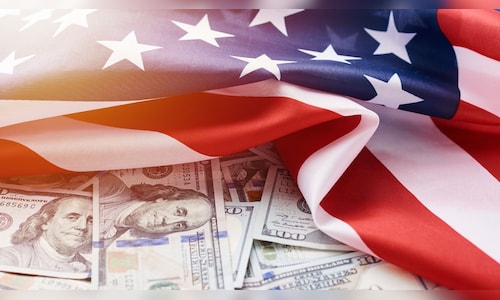
The so-called core personal consumption expenditures price index, which strips out volatile food and energy items, increased 2.8% from October last year and 0.3% from a month earlier, according to Bureau of Economic Analysis data out Wednesday (November 27). A good part of that acceleration was due to the impact of higher stock prices on the calculation.
Inflation-adjusted consumer spending edged up 0.1% after an upwardly revised 0.5% gain in September, consistent with uneven demand over the course of the year.
Also Read: US economy grows at 2.8% pace in Q3 on consumer spending, unchanged from first estimate
On a three-month annualised basis — a metric economists say paints a more accurate picture of the trajectory of inflation — the core PCE price gauge advanced 2.8%.
The figures support recent comments by many Fed officials that there’s no rush to cut interest rates so long as the labour market remains healthy and the economy continues to power ahead.
While inflation is taking time to recede back to the Fed’s 2% target, the policy path ahead will be complicated by President-elect Donald Trump’s economic agenda. Stanley Black & Decker Inc. said it’s already considering raising prices early next year in anticipation of higher tariffs.
Treasuries pared gains after inflation data, while the S&P 500 remained a touch weaker.
Also Read: Russia says it will respond if US places missiles in Japan
The pickup in inflation was due to service prices, reflecting a surge in portfolio management fees that coincided with a rally in stock prices. Core services prices — a closely watched category that excludes housing and energy — climbed 0.4% from a month earlier, the most since March. Core goods costs were unchanged.
The PCE figures follow a slew of other economic releases ahead of the Thanksgiving holiday on Thursday. A separate government report Wednesday showed gross domestic product increased an unrevised 2.8% in the third quarter, fueled by healthy advances in household and business spending.
Income figures from the October PCE report offer the possibility for healthy spending growth in the months ahead. Inflation-adjusted disposable personal income increased 0.4% last month, the most since January.
Moreover, nominal wages and salaries rose a solid 0.5%, while the saving rate increased for the first time since the start of the year.
Spending Breakdown
Services spending, which makes up the bulk of household consumption, rose 0.2% from a month earlier, largely reflecting healthcare outlays. Goods outlays ticked up.
Also Read: US markets face Trump tariff risks, Citi economist warns
While the job market is solid, an elevated cost of living is stretching household budgets. That explains why Americans say they intend to spend less on holiday gifts this year.
Economists will be closely watching Black Friday sales to get another reading on consumers’ spending appetite. Big-name retailers Target Corp., Best Buy Co. and Walmart Inc. have all extended their holiday promotions in the hopes of attracting consumers seeking deals.
Many consumers are relying on credit cards and other loans to support their spending, with younger consumers and lower earners showing signs of financial strain like higher delinquency rates.



